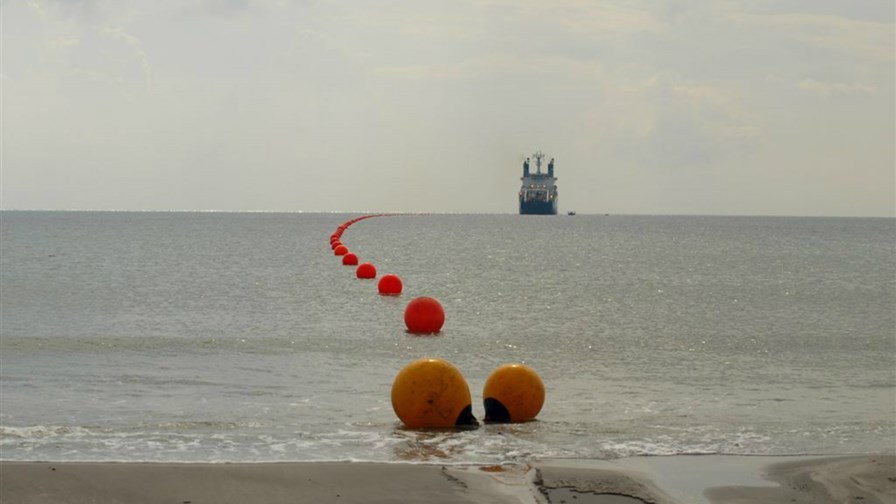
via Flickr © Global Marine Photos (CC BY-ND 2.0)
- Global data demand shows no signs of slowing
- Rather the reverse as global cloud continues to grow at an increasing rate
- Infinera and Seaborn Networks have announced new technology to keep the data flowing over Seaborn’s Atlantic cable
Infinera and Seaborn Networks a leading developer-owner-operator of submarine fiber optic cable systems, have announced the launch of new submarine network services on Seaborn’s AMX-1 submarine network segment connecting the U.S. and Brazil.
With submarine cable you have two main ways to increase the system’s data capacity. You can add more fibres to future cables you drop to the sea floor as part of a longer term strategy, or you can adopt the latest technology to plug into the fibre pairs you already have to make the data go faster and/or further. Over time you probably have to do a combination of both.
In its latest investment in its route, Seaborn is plugging in Infinera’s XT Series submarine network platforms, featuring its Infinite Capacity Engine (ICE) technology. The investments get more capacity out of the fibres and improve the spectral efficiency. Meaning the Seaborn network gets a signal that can travel further enabling it to optically bypass some cable landing stations and reduce network costs.
I spoke with Andy Bax, COO at Seaborn and Brian James-Ince, EMEA and ICP Regional Director, Subsea at Infinera about subsea systems.
What emerged was a recognition that the technology has moved forward in leaps and bounds but the approach to laying cables has essentially remained the same for the last hundred years.
Seas are highways, not barriers, and having a handy ocean has always provided the best way to get around, as long as you had a boat. Which is certainly why nearly all the world’s important cities are usually built where the river meets sea. These became population centres and commercial hubs and now are the natural data hubs - partly because the ocean is still there and remains the best way to ship in vast amounts of data - by submarine cable.
So how far has the technology improved? How much more data is being pumped over the system now than five years ago?
If you go back even just three or four years, says Andy, Seabras 1 was the largest 10 thousand kilometre system and that returned almost 100 terabits with 12 terabits per fibre pair across one cable. Today we think we can get 17 to 18 terabits per fibre pair on Seabras 1 with the latest technology.
“It’s a huge effort to put one of these cables down, but of course the amount of bandwidth we can get is immense.”
Andy and Brian both have no doubt that demand is going to keep accelerating and submarine cable - just as we’ve come to know it - will be the medium to deliver the required capacity. A submarine cable, they say, takes the most direct path (compared to terrestrial alternatives). That’s just one advantage: “It’s extremely secure and yes it takes a bit longer to fix if it breaks, but oceanic makes sense because of the huge amount of bandwidth you can push around.“
Email Newsletters
Sign up to receive TelecomTV's top news and videos, plus exclusive subscriber-only content direct to your inbox.




